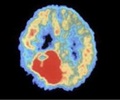Nanoparticles that may someday come to be used for targeting and destroying tumours, marking the end of toxic chemotherapies, have been developed
Nanoparticles that may someday come to be used for targeting and destroying tumours, marking the end of toxic chemotherapies, have been developed by scientists at the University of Central Florida.
J. Manuel Perez, an assistant professor at the university, has revealed that the nanoparticles designed by his team carry Taxol, one of the most widely used chemotherapeutic drugs.Taxol normally causes many negative side effects because it travels throughout the body and damages healthy tissue as well as cancer cells.
Considering this, Perez and his colleagues have engineered the Taxol-carrying nanoparticles in such a manner that they carry the drug only to the cancer cells, allowing targeted cancer treatment without harming healthy cells.
The researcher have revealed that they could achieve this by attaching a vitamin (folic acid) derivative that cancer cells like to consume in high amounts.
The nanoparticles also carry a fluorescent dye and an iron oxide magnetic core, which is why their locations within the cells and the body can be seen by optical imaging and magnetic resonance imaging (MRI).
This will enable doctors to see how a tumour is responding to the treatment.
Advertisement
According to them, if there is no cancer, the biodegradable nanoparticles will not bind to the tissue and will be eliminated by the liver.
Advertisement
"Our work is an important beginning, because it demonstrates an avenue for using nanotechnology not only to diagnose but also to treat cancer, potentially at an early stage," Perez said.
A research artcil eon this work has been published in the journal Small.
Source-ANI
RAS











